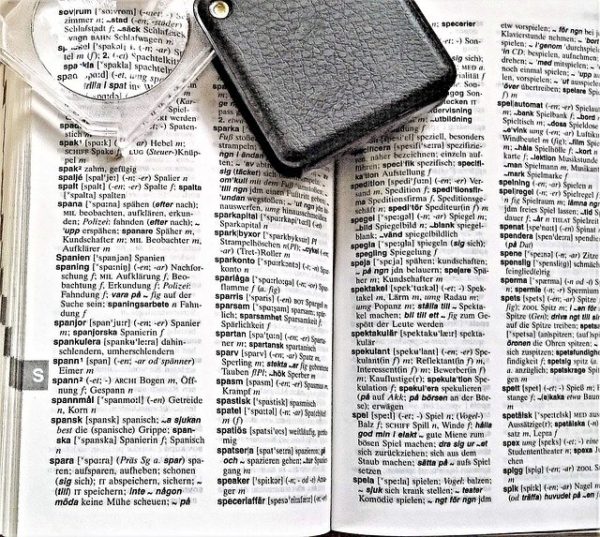Perfect Your Swedish Pronunciation
When you’re learning a second language, chances are, you won’t sound like a local. At first. But, there are very simple steps that can make your accent disappear when you’re speaking Swedish. This Swedish pronunciation guide holds all the secrets to how you need to speak the language correctly. Just follow these 10 steps, and by the end, you’ll surely sound just like a local when you’re speaking Swedish.
1. Master the Swedish Alphabet
First and foremost, you need to master the Swedish alphabet. Since Swedish uses the same Latin letters as English, this step is easy for native English speakers. But, there are a couple of new letters, especially vowels, that you need to pay attention to. These actually exist to signal pronunciation differences, so it’s extremely important to know them for your Swedish pronunciation.
The Swedish alphabet has 29 letters. These include the 26 Latin letters, plus 3 special characters. The three special vowels at the end aren’t just accented versions of a and o. They’re separate letters in their own right.

Check out the 29 letters of the Swedish alphabet and how to pronounce them here.
Swedish Alphabet |
Phonology |
Pronunciation Example |
A a |
/ɑː/ |
father or must |
B b |
/beː/ |
book |
C c |
/seː/ |
s before i, e, or y: sight
k everywhere else: kind |
D d |
/deː/ |
doctor |
E e |
/eː/ |
a before g: father
e everywhere else: elevator |
F f |
/æf/ |
football |
G g |
/ɡeː/ |
si before e, i, y, ä, ö: vision
hard g everywhere else: get |
H h |
/hoː/ |
hold |
I i |
/iː/ |
ink |
J j |
/jiː/ |
pleasure |
K k |
/koː/ |
kind |
L l |
/æl/, /ˈæl.læ/ |
love |
M m |
/æm/, /ˈæm.mæ/ |
mom |
N n |
/æn/, /ˈæn.næ/ |
night |
O o |
/oː/ |
food or good |
P p |
/peː/ |
pair |
Q q |
/kuː/ |
Kurt |
R r |
/ær/, /ˈær.ræ/ |
rolled r like Spanish |
S s |
/æs/, /ˈæs.sæ/ |
sight |
T t |
/teː/ |
table or double |
U u |
/uː/ |
ultimate |
V v |
/ʋeː/ |
brother |
W w |
/ʋeː/ |
vibe |
X x |
/æks/, /ˈæk.sæ/ |
box |
Y y |
/yː/ |
debut |
Z z |
/tset/, /ˈtse.tɑ/ |
sound |
Å å |
/oː/ |
home |
Ä ä |
/æː/ |
ae as in air |
Ö ö |
/øː/ |
ultra |
The letters Q, W, and Z aren’t part of everyday Swedish. But, you may see them in foreign loanwords. If you want to hear the Swedish alphabet, check out this handy video:
2. Conquer Swedish Digraphs
Digraphs are letter combinations that signal a single sound. So, even though you see two letters, it’s only one sound that you need to pronounce. Swedish also has trigraphs, this is the same concept as a digraph, just with three letters instead of two. Knowing what these combinations are is crucial to your Swedish pronunciation. So, every time you see these two letters together, you know how to say them:
Swedish Digraphs and Trigraphs |
How You Pronounce Them |
dj, gj, hj, lj |
like the Swedish “j” (English y) |
sch, sj, skj, stj |
between “sh” and “ch” |
sk |
“sh” before e, i, y, ä, ö
“sk” everywhere else |
tj, kj |
“sh” (but slightly different) |
ch |
like tj/kj before e, i, y, ä, ö
like sj/stj before a, o, å, u |
ng |
nasal “n” like rang |
ry |
like “ry” |
3. Understand the Swedish Pronunciation Rules
Of course, know the Swedish alphabet and its letters doesn’t immediately mean that you can read every Swedish word. While the sounds are mostly the same, there are some pronunciation differences and rules in Swedish that you need to know.
Pronouncing Consonants in Swedish
- C = “s” before e, i, and y. Everywhere else C = “k”
- G is always hard like get, never soft like gem. Before e, i, y, ä, or ö G = “y” (like yes)
- D, T, N are all pronounced with your tongue pressed against your top teeth
- J = “y” (like yes)
- K = “sh” before e, i, y, ä, ö. Before a, o, å, u, K = “k” (like kind)
- R is rolled, like in Spanish
- S = “s”, it’s never “z” like in has
Pronouncing Vowels in Swedish
Vowels can be long or short in Swedish. Just like in English, these vowels are flexible and may change in certain situations (like a in father isn’t the same as in late).
- A: long like father, short like must
- Å: like home, without the glide
- Ä: long like air, short like get
- E: long like plane, short like get
- I: long like meet, short like bit
- O: long like food, short like good
- Ö: long like the German shön, short like French le
- U: long like food, short like ultra
- Y: long like “eey”, short like “ey”
4. How to Stress Words in Swedish
In Swedish, intonation matters. So, there are certain syllables in Swedish words that you have to stress and put emphasis on to sound like a local. With time, these rules will come to you naturally. But, for now, let’s list them to make sure you’re aware of these intonation rules.
Generally, the first syllable of the word is stressed in Swedish. However, in certain cases, this rule gets chucked out the window.
- words with a prefix get the stress on the second syllable (bedriva – operate, förnya – renew)
- words that end in -era get the stress on “e” (agera – act, numera – nowadays)
- loanwords of French origin have the stress on the final syllable (paraply – umbrella, kliché – cliché)

5. Listen to the Sounds of the Language
When you’re trying to recreate the sounds of Swedish, it’s worth taking a second to just listen to it at first. Whenever you have the opportunity, try to gauge the rhythm, intonation, and melody of the language. This method is very effective.
It’s actually part of the comprehensible input language learning theory by Stephen Krashen. Apparently, babies take the first year of their life to listen to their mother tongue. That’s part of why you speak your native language so well.
You, of course, shouldn’t take a year just listening to the sounds of Swedish when you’re learning it as a second language. But, do make sure you concentrate on this part of your lessons as well. This step to learning how to pronounce Swedish is often overlooked.
6. Start Speaking Swedish ASAP
Many language learners fear embarrassment when they first start learning a new language. This language learning anxiety of speaking only limits you. You should be afraid to speak Swedish. In fact, you should start practicing your speaking skill as soon as possible.
The only way you’ll have good Swedish pronunciation is with practice. So, if you truly want to reach fluency fast, you should start it immediately. The best language learning methods don’t make you type the language. They immediately make you speak Swedish.
7. Talk to Locals or Other Learners
The most effective way you can practice your Swedish pronunciation is with Swedish locals. They can help you polish your accent, and give you pointers on how you can do it better. Don’t be shy, Swedish locals won’t judge you because you messed up a word or two. You’re learning a completely new language, it’s an amazing feat and they’re more impressed by your efforts than you think.
But, finding real Swedish people to practice with is often a luxury. If you have other Swedish learners in your area, it’s worth practicing with them. Of course, don’t listen or try to copy their accents. They’re just learners too, and they may have a worse accent. But, talking to another human definitely has its advantages.
Don’t have Swedish locals or other language learners near you? It’s ok, who needs friends anyway! Just practice in front of the mirror. Talking to yourself, your houseplants, or your pets in Swedish still brings you closer to fluency.

8. Record Your Swedish Pronunciation
This is a great trick to perfecting your Swedish pronunciation. Every smartphone has a voice recording feature. And if you don’t have a smartphone, that old camcorder in your garage also has the same feature. Just dust it off, and turn it on to record your Swedish pronunciation.
When you listen back to it, listen to how you sound. If you notice mistakes in your accent or pronunciation, make sure you correct it. Practice those letters and sounds that you struggle with more.
9. Practice Your Swedish Pronunciation a Lot
What a perfect Swedish pronunciation ultimately comes down to is practice. A lot of it. You need to teach your mouth how to form the sounds of a completely foreign language. And that takes time. Even if you don’t speak to other people as you practice, the end goal is to communicate with Swedish locals. And they have to understand your accent if you want to talk to them.
Language is first and foremost a spoken form of communication. And the only way you’ll be comfortable with speaking Swedish is if you practice your pronunciation plenty of times. Some language programs only make you type Swedish. And when the time comes to speak to a local, you’ll completely freeze up (and not just because it’s cold in Sweden.)
10. Perfect Your Pronunciation With a Swedish Learning App
The easiest way to perfect your Swedish pronunciation is with an app that (almost) does it for you. A language learning program that focuses on making you speak, and not type the language. One with built-in Swedish pronunciation guides. And that program is OptiLingo.
OptiLingo is the best language learning app. Not just because it helps you practice your pronunciation. It also gives you a list of the most common Swedish words and phrases. So, when you talk to real Swedish locals, you have topics to discuss too. Achieve a perfect Swedish accent by downloading OptiLingo!








